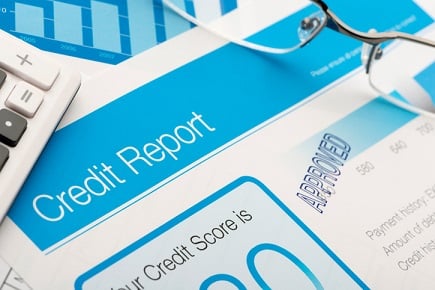A shift to purchase loans has helped drive an increase in mortgage credit risk

Mortgage credit risk is on the rise but still within a normal range, according to new data from CoreLogic.
The analytics company released its CoreLogic Housing Credit Index (HCI) for Q3 2017 Tuesday. The HCI measures trends in six mortgage credit-risk attributes: borrower credit score, debt-to-income ratio (DTI), loan-to-value ratio (LTV), investor-owned stauts, condo/co-op share and documentation level.
In the third quarter, the HCI spiked 18 points from Q3 2016, rising from 93.1 to 111.1. Even with the increase, however, credit risk was still within the HCI’s benchmark range. A range of 90 to 121 is considered to be a normal baseline for credit risk, according to CoreLogic.
“The CoreLogic Housing Credit Index is up compared to a year ago, in part reflecting a shift in the mix of loans to the purchase market, which typically exhibit higher risk,” said Frank Nothaft, chief economist for CoreLogic. “Further, the index shows higher risk for both purchase and refinance loans, although the risk levels still remain similar to the early 2000s. When looking at the two most recent quarters in which the mix of purchase and refinance loans were similar, the CoreLogic Housing Credit Index for each segment remained stable. Looking forward to 2018, with continuing economic and home-price growth, we expect credit-risk metrics to rise modestly.”
According to CoreLogic, the average credit score for homebuyers increased by seven points year over year, rising from 739 to 746. The average DTI for homebuyers in Q3 was unchanged at 36%. The average LTV dropped nearly tow percentage points year over year, falling from 86.4% to 84.9%.
While low- or no-documentation loans remained a small part of the mortgage market in the third quarter, they did increase from 1.5% to 2.2% of purchase loans during the year.
The analytics company released its CoreLogic Housing Credit Index (HCI) for Q3 2017 Tuesday. The HCI measures trends in six mortgage credit-risk attributes: borrower credit score, debt-to-income ratio (DTI), loan-to-value ratio (LTV), investor-owned stauts, condo/co-op share and documentation level.
In the third quarter, the HCI spiked 18 points from Q3 2016, rising from 93.1 to 111.1. Even with the increase, however, credit risk was still within the HCI’s benchmark range. A range of 90 to 121 is considered to be a normal baseline for credit risk, according to CoreLogic.
“The CoreLogic Housing Credit Index is up compared to a year ago, in part reflecting a shift in the mix of loans to the purchase market, which typically exhibit higher risk,” said Frank Nothaft, chief economist for CoreLogic. “Further, the index shows higher risk for both purchase and refinance loans, although the risk levels still remain similar to the early 2000s. When looking at the two most recent quarters in which the mix of purchase and refinance loans were similar, the CoreLogic Housing Credit Index for each segment remained stable. Looking forward to 2018, with continuing economic and home-price growth, we expect credit-risk metrics to rise modestly.”
According to CoreLogic, the average credit score for homebuyers increased by seven points year over year, rising from 739 to 746. The average DTI for homebuyers in Q3 was unchanged at 36%. The average LTV dropped nearly tow percentage points year over year, falling from 86.4% to 84.9%.
While low- or no-documentation loans remained a small part of the mortgage market in the third quarter, they did increase from 1.5% to 2.2% of purchase loans during the year.



